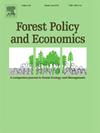呼吸的城市:通过森林城市命名量化碳减排
IF 3.8
2区 农林科学
Q1 ECONOMICS
引用次数: 0
摘要
在全球气候问题日益严重的背景下,城市碳减排战略对可持续发展具有越来越重要的意义。本文利用准自然实验框架下的差异中差模型,对中国森林城市在过去20年的碳减排效果进行了研究。基线估计表明,在政策实施后,处理组的碳排放量减少了248.2万吨。按碳的社会成本和碳的死亡成本计算,这一减少可转化为6 694万至9 084万美元的经济效益,同时有可能防止266至560人因气候变化而过早死亡。有效机制包括森林面积增加、蓄积量增加、城市绿化扩大、固碳能力增强、公众环保意识提高(环境投诉增多)。此外,绿色金融倡议和环境立法显著放大了森林城市的脱碳效应。市长特征也显示出调节效应,性别多样性、较高的教育程度、人文和社会科学背景以及家乡服务任命有助于更有效地应对气候变化。本研究提供的经验证据表明,城市林业政策可以带来可量化的气候效益,为决策者在日益变暖的世界中寻求基于自然的解决方案以应对城市碳挑战提供了宝贵的见解。本文章由计算机程序翻译,如有差异,请以英文原文为准。
Cities that breathe: Quantifying carbon emission reductions through forest city designation
Amid escalating global climate concerns, urban carbon reduction strategies have gained increasing significance for sustainable development. This study investigates the carbon abatement impact of China's forest city designation over the past two decades, utilizing a difference-in-differences model within a quasi-natural experimental framework. The baseline estimates indicate that, after the policy implementation, the treatment group experienced a reduction of 2.482 million metric tons in carbon emissions. Applying social cost of carbon and mortality cost of carbon, this reduction translates into economic benefits ranging from $76.94 million to $90.84 million, while potentially preventing 266 to 560 premature deaths associated with climate change. The effectiveness mechanisms include increased forest area, enhanced stock volume, expanded urban greening, improved carbon sequestration capacity, and heightened public environmental awareness as evidenced by rising environmental complaints. Furthermore, green finance initiatives and environmental legislation significantly amplify the decarbonization effects of forest city designation. Mayor characteristics also demonstrate moderating effects, with gender diversity, higher educational attainment, humanities and social sciences backgrounds, and hometown service appointments contributing to more effective climate change responses. This research provides empirical evidence that urban forestry policies can deliver quantifiable climate benefits, offering valuable insights for policymakers seeking nature-based solutions to address urban carbon challenges in an increasingly warming world.
求助全文
通过发布文献求助,成功后即可免费获取论文全文。
去求助
来源期刊

Forest Policy and Economics
农林科学-林学
CiteScore
9.00
自引率
7.50%
发文量
148
审稿时长
21.9 weeks
期刊介绍:
Forest Policy and Economics is a leading scientific journal that publishes peer-reviewed policy and economics research relating to forests, forested landscapes, forest-related industries, and other forest-relevant land uses. It also welcomes contributions from other social sciences and humanities perspectives that make clear theoretical, conceptual and methodological contributions to the existing state-of-the-art literature on forests and related land use systems. These disciplines include, but are not limited to, sociology, anthropology, human geography, history, jurisprudence, planning, development studies, and psychology research on forests. Forest Policy and Economics is global in scope and publishes multiple article types of high scientific standard. Acceptance for publication is subject to a double-blind peer-review process.
 求助内容:
求助内容: 应助结果提醒方式:
应助结果提醒方式:


